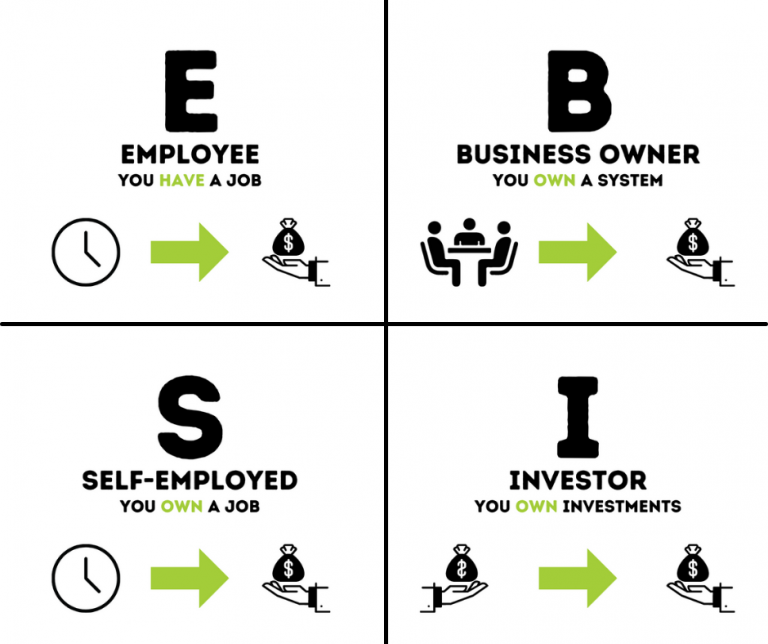In the world of personal finance, Robert Kiyosaki’s Rich Dad series has become a cornerstone for those seeking financial education and success. Among the many concepts introduced by Kiyosaki, the CASHFLOW Quadrant stands out as a fundamental framework for understanding the different ways individuals generate income. This quadrant divides the world of work and income into four distinct categories, each represented by a letter: E (Employee), S (Self-Employed), B (Business Owner), and I (Investor).
Let’s delve into the Rich Dad Fundamentals: The CASHFLOW Quadrant and explore the unique characteristics and income sources associated with each quadrant.
- E (Employee):
The Employee quadrant is where the majority of people find themselves. Employees work for others and earn a paycheck in exchange for their time and effort. In this quadrant, individuals are typically trading their time for money, have job security, and receive benefits like health insurance and retirement plans. However, they often lack control over their work hours and have limited potential for substantial wealth creation.
Key Characteristics:
- Earn a fixed salary or hourly wage.
- Reliant on job security.
- Limited control over work hours and tasks.
- Income is directly tied to time worked.
- S (Self-Employed):
Self-employed individuals operate their own businesses or work as freelancers and consultants. While they have more control over their work compared to employees, they are often still trading time for money. Self-employed individuals might include doctors, lawyers, or small business owners who handle many aspects of their operation.
Key Characteristics:
- Own and operate their own business.
- Greater control over work but may still trade time for money.
- Often personally responsible for the success or failure of their enterprise.
- Income can be inconsistent, especially in the early stages of entrepreneurship.
- B (Business Owner):
The Business Owner quadrant represents individuals who have built systems and teams to run their businesses independently of their direct involvement. In this quadrant, wealth is often created through the leveraging of other people’s time and efforts. Business owners focus on creating and managing systems that generate income, allowing them to step back and enjoy both time and financial freedom.
Key Characteristics:
- Owns a business that operates with or without their direct involvement.
- Income is generated through systems and team efforts.
- Greater potential for scalability and wealth creation.
- Emphasis on building and managing assets.
- I (Investor):
Investors are individuals who make their money work for them by deploying capital into various investment vehicles. This can include stocks, real estate, businesses, and other assets. The Investor quadrant represents financial independence and passive income streams, allowing individuals to build wealth without actively working for it.
Key Characteristics:
- Earn income through returns on investments.
- Focus on building and managing a diversified portfolio.
- Passive income streams provide financial independence.
- Investments include stocks, real estate, businesses, and other assets.
Conclusion:
Understanding the CASHFLOW Quadrant is a crucial step toward achieving financial literacy and success. While many start in the Employee or Self-Employed quadrants, the goal is often to transition to the Business Owner and Investor quadrants to achieve greater financial freedom and wealth. By strategically moving through the quadrants, individuals can design a path that aligns with their financial goals and aspirations, ultimately unlocking the doors to a more prosperous and fulfilling life.
Over the last 5 years of working with Hawaii based businesses, we’ve found that the best two ways to begin your online business journey are through an Amazon FBA or Etsy business. If you’re curious about learning more about these types of business, you can view our resources or quick start guides for free.
Help us in our mission of starting 1,000 NEW Hawaiian businesses this year and help our beautiful state regain our financial independence.


Leave A Comment